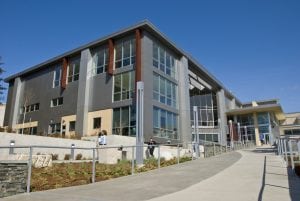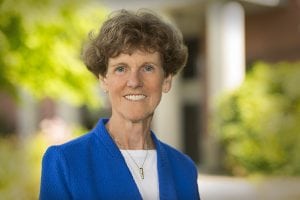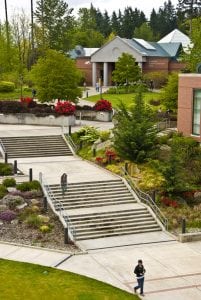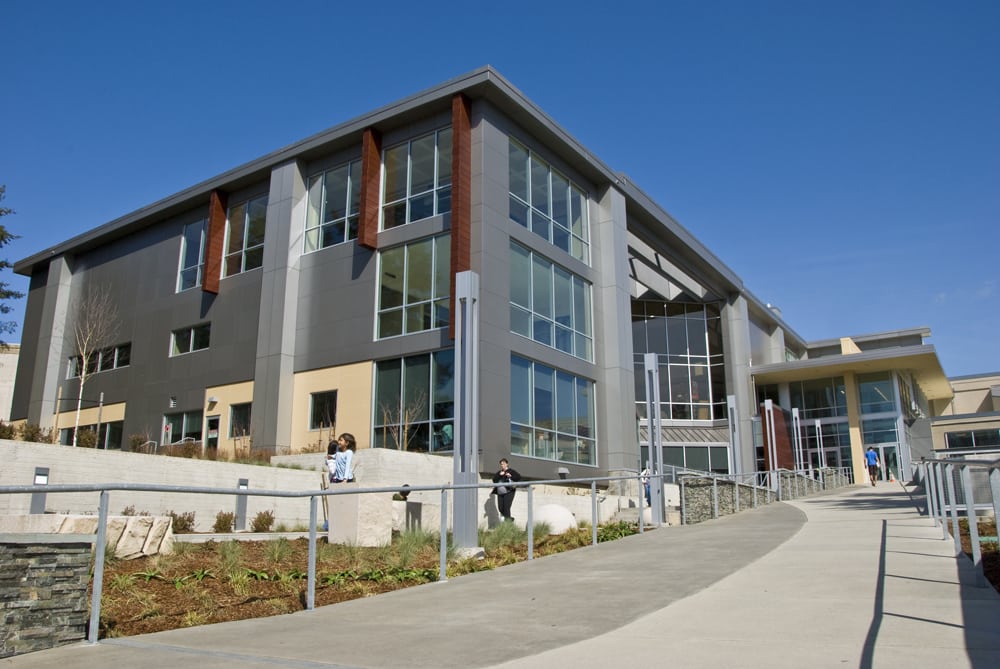Pierce College has always had a focus on student success. After all, community colleges were built on a model of open access and serve as an important way for people to get the skills they need for a constantly changing world. Whether students need to brush up on a skill, get a certificate, take a few classes or get a degree, many students go to a community college to get ahead.
But when Pierce College sat down to look at their data in 2009, they realized the gaps in the data told a story—a story where many students were not reaching their dreams. From quarter to quarter, only 80% of students were returning. From one year to the next, only 49% were coming back. The school’s three-year graduation rate was at just 18.8%.

So they set out to change that, using the data to guide decisions to get more students to the finish line.
What did they do and how did they do it?
Pierce College’s journey toward improving student success really starts and continues with data. The college set out to analyze their data in 2009, but realized by 2012 that they were not seeing the changes they wanted. In 2012, they joined Achieving the Dream, which provides not only networking opportunities, but also two coaches assigned to the college to help advise on decisions and data analysis.
“We’ve had to change policies and programs and classes,” says Pierce College Chancellor and CEO Michele L. Johnson. “We’ve had to move money even during a very tight budget time. I think some colleges approached Achieving the Dream as an initiative. We said—this is not an initiative. This is a framework. This is the way we’re going to achieve our mission.”
Their efforts included the work of more than 200 faculty and staff involved in planning what to do and how to do it, bringing on new staff members, as well as shifting their operating budget into specific priority areas designed to help students.
The new experience starts as students enter the school. As Pierce analyzed what universities do to get students going, they realized most implement an orientation process. So Pierce did the same and today all new students attend orientation and enroll in a mandatory College Success class that’s geared toward building skills from setting goals to exploring careers to self-assessment. Students are also now required to meet with advisors to register for classes, a step that ensures all students understand where they’re going and how to get there.

Next, Pierce College looked at assessment. Assessment tests evaluate students on their math, English and reading skills. It’s not uncommon for students to place below college level.
“Math has been a big barrier,” says Johnson. “We took time to redevelop all the pre-college math, from how to do assessment differently and adding supplemental instruction. We decided we could put students into college level and take another look at how we were providing them resources for success rather than having them in a pre-college level course that doesn’t contribute to their degree and eats into their financial aid. We now have more students testing into college level, and we have doubled completion rate of students who can get to college level math in one year.”
Similar changes were made to pre-college English courses and English 101, including a new reading approach. More than 250 faculty were taught to teach students how to read better and glean more information more efficiently – an essential skill for any student.
Beyond students, the changes also looked at ways of improving the faculty’s ability to boost their own success, again, using data.
“We have a software program called Tableau,” adds Johnson. “We can aggregate our data on all kinds of demographics. Every faculty member can see their own completion rates by course as well as everyone else’s. They can see how students do in their course and afterward, so it helps raise faculty awareness on where problems are. This gets our faculty talking about what’s working and what not, and helps departments get together and talk about how to measure success and look at how students are doing when they leave.”
The Rewards and What’s Next
Eight years later, the gaps are closing and Pierce College has received one of the most prestigious national awards for two-year colleges – the Leah Meyer Austin Award presented by Achieving the Dream. The college’s efforts have taken the quarter to quarter return rates from 80% to 88%; the year-to-year return rates from 49% to 60%; and the three-year graduation rate from 18.8% to 31%. While there used to be a large divide between first-generation students and students with families who had gone to college before them, today there’s only a 1% difference in the two metrics.

“Achieving the Dream awards a college that has made bold, significant changes in student success,” says Johnson. “We were actually also selected along with Miami Dade, which is the largest community college in the country so we feel like we’re in good company.”
The next phase involves refining what they’ve done so far as well as pushing farther ahead. The next big portion of what the school is doing involves career pathways, which are more or less roadmaps to keep students focused on their career or degree goals.
“First we had to create the pathways and how to get students on the path,” explains Johnson. “Now we’re asking: how will we refine advising, how will we refine the College Success class, how can we help students select the right career pathway to be on. Lastly will be how we can help them stay on those paths, how do we get them the resources they need whether that’s financial or academic challenges, or even getting into housing and food security.”
Beyond this, there is still much work that the college hopes to do to continue to improve and push forward. Above all, Pierce College continues to look at the data to make sure students are learning and moving on from the school with skills they need to thrive.
“Recognition is nice, but it’s what the recognition represents that’s important,” says Johnson. “It represents the work that we’ve done to help students be successful. Students are the winner. We’re changing what we do on behalf of our students. And we have to keep it up. We have these things to celebrate, but now we have to keep going.”
For more information about Pierce College, visit their website.
Sponsored













































